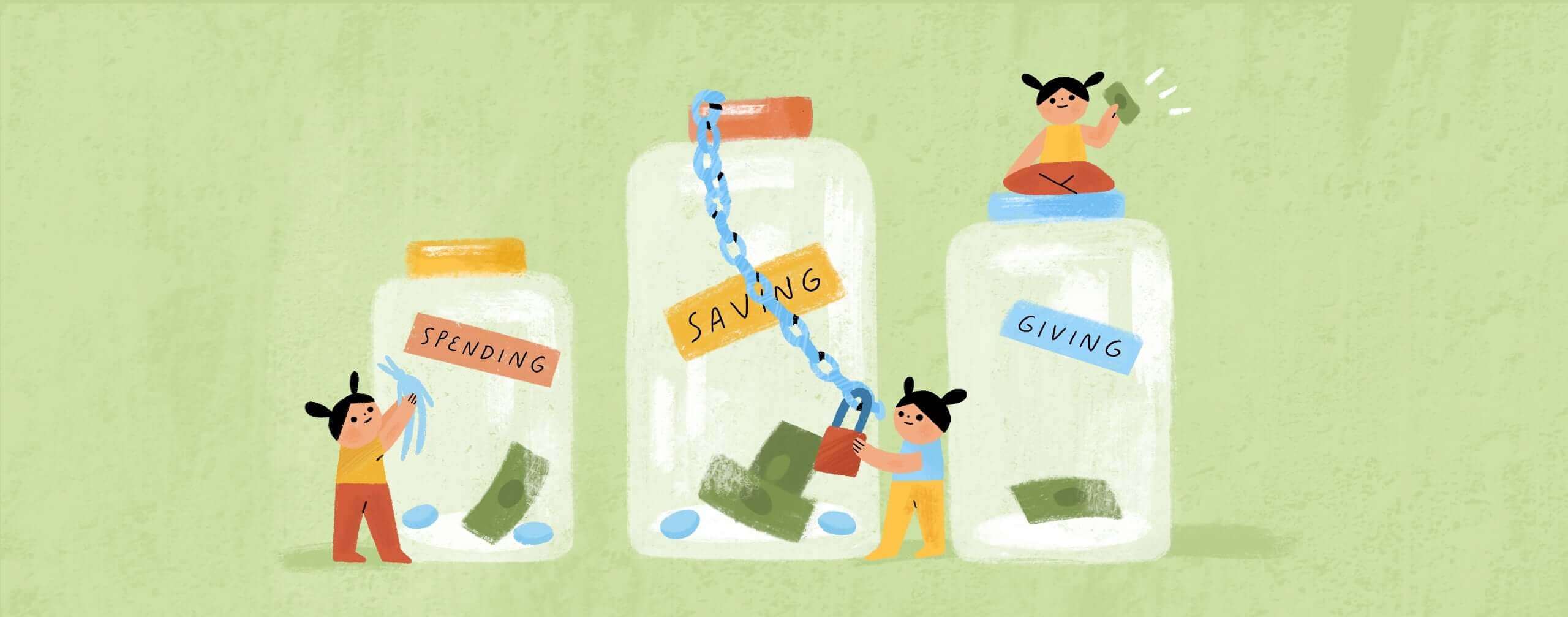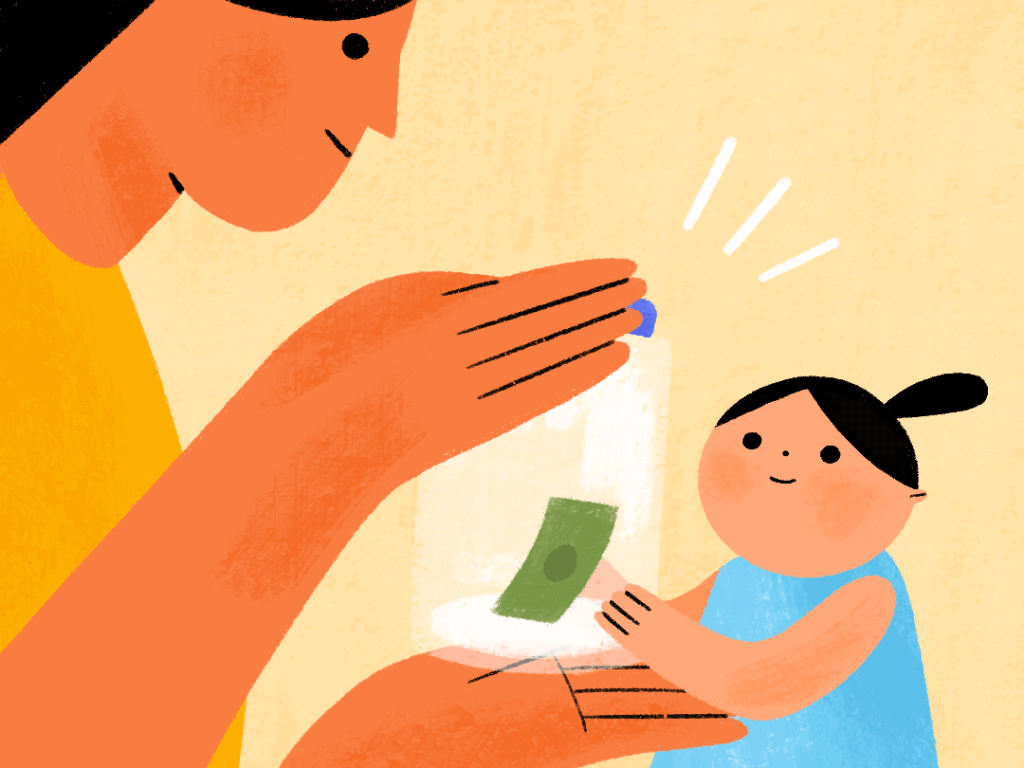
3 Jar Allowance for Kids
October 5, 2021The sooner you teach your children the basics about budgeting, the better, and the 3 jar money system is a great way to get started.
Kids and Money
To learn how to manage money in the 3 jar system, kids need some money to manage. How they get that money can vary. Some children earn cash by doing small jobs for friends or neighbors. Others start a career as an entrepreneur by opening their own lemonade stand or starting a window-washing business. Still others are given regular amounts of money from their parents as an allowance. However your child earns or receives money, remember to use it as a teaching tool. Done correctly, money can help a child learn to create a spending plan and live by it.
What should I give an allowance for?
If you decide to give your children an allowance, you’ll have to determine whether it will be contingent on them completing certain tasks or not. Those tasks could include regular chores like keeping their room clean or something more extensive like weeding the yard or getting certain grades at school. As fair warning, requiring your child to “earn” their allowance in this way is a topic of heated debate, so it’s worth doing some research and weighing what you’re comfortable with.
The biggest factor in determining how much allowance is appropriate for your child is what you expect them to use this allowance for. If it’s intended to only cover small treats or contribute toward saving for a long-term goal, the amount can be fairly small. If you expect an older child to use some of the allowance for necessities, like clothing and school supplies, they’ll need more.
The 3 Jar Money System
The 3 jar system is a popular way to begin teaching children how to budget. With this system, you give your child three clear jars, each representing a different fund: spending, saving, and giving. The child will then divide their money into the jars with your guidance. Budgeting their money in this way teaches children to actively plan for their current and future wants. Encourage your child to stick to their budget. If they fall short in one category, the goal is to help the child modify their behavior or budget instead of pulling from another jar. For example, if your child would like to spend more money than they have in the spending jar, they should re-prioritize their wants, earn more money, or rethink their budget instead of pulling from the saving or giving jars.
The Saving Jar
The saving jar teaches kids to set and work toward goals. This shouldn’t be money put away for a nebulous purpose. It should be specific. Does your child want to save up for a new game? Or perhaps a certain toy? Help your child determine what they want and then, every time they go to separate their money into their jars, remind them that the more money they’re willing to give up now, the sooner they can reach this goal.
It could help to create a general “rule” with your child, like 30% of their money should always go to saving or for every $2 in the spending jar, one should go to saving—however you and your child decide to prioritize and divide the money is fine. The goal is to impart the importance of saving and begin building the habit.
The Spending Jar
The spending jar is all about what kids want to buy now. This is how they finance little things like candy bars or trinkets at the grocery store. This budget can also include budgeting for bigger things like clothing, school supplies, or even food if you decide you want your child to pay for some of those things themself. Just remember that you need to give them an avenue to earn the money to cover whatever you expect them to pay for.

The Giving Jar
The giving jar encourages children to think about others. Help them choose a cause that’s important to them, perhaps a charity that supports an animal they like or a Secret Santa fund for a family in your community. The giving jar can also go toward gifts for other people—a birthday gift for a friend, a thank you present for a teacher, etc. When it comes time to donate the money they’ve saved, do your best to find a way to show them the impact of their generosity. Even a little goes a long way, and this is a great way to teach that principle.
Optional 4th Jar for Investing
Another option is to include a 4th jar dedicated to investing. The idea is for your child to set the money aside and you to help them invest it, perhaps by buying a few shares with their money in your portfolio. This crucial life skill helps people build their wealth and secure their future. Unfortunately, the idea of investing is intimidating to many, especially when you understand the potential for loss. While it’s always important to be careful, learning the basics early will help increase your child’s confidence and start them off on the right foot. If you feel unsure about how to start teaching about investing, check out this article about teaching children about money.
Moving Forward
Once your child gets the hang of the 3 jar money system and begins to master general budgeting concepts, the next step will be to bring them, and their jars, into a local financial institution to open their first account. This will give you the chance to teach them about interest and how storing their money at a bank or credit union will keep it safe.
With the money in an account, you can then help your child create more categories for their budget. Can they divide their spending budget into further categories? Can they create a fund for each individual savings goal? The three jar system is just the beginning or a lifetime of careful budgeting and money management.
This article has been republished with permission. View the original article: 3 Jar Allowance For Kids.
